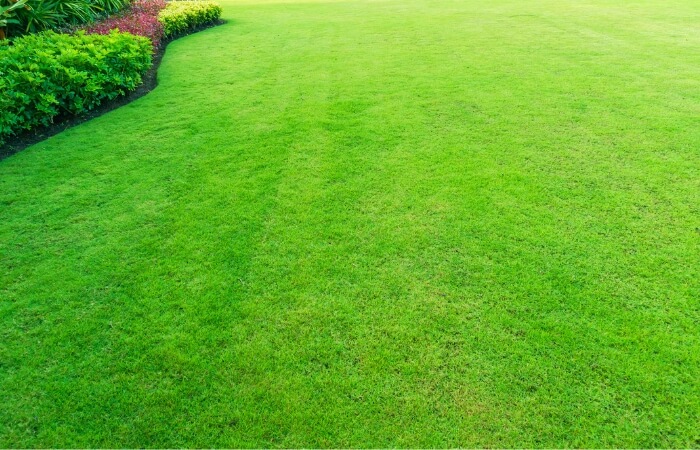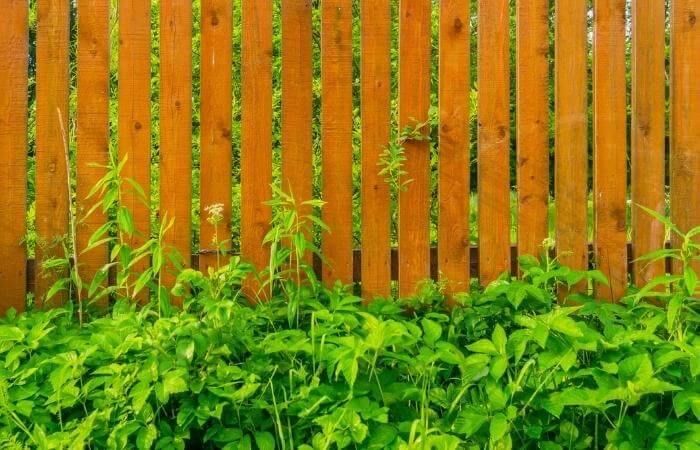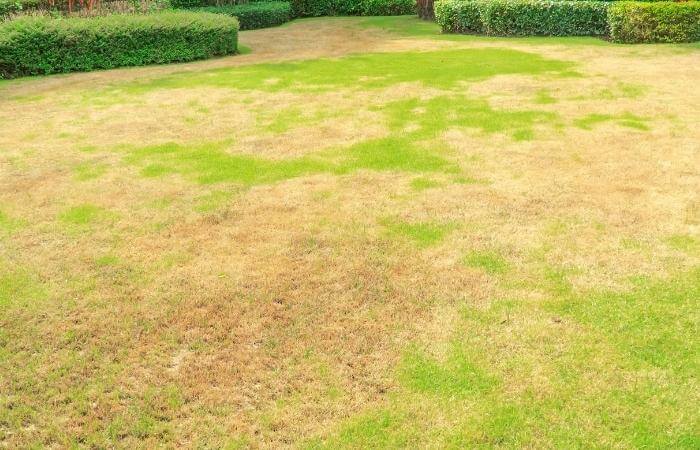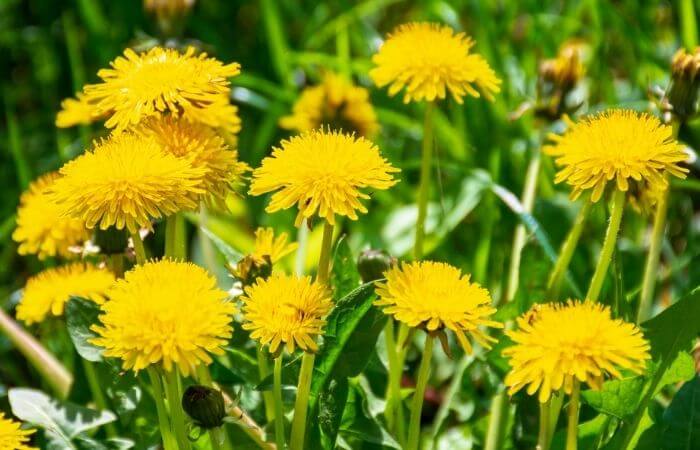Is there a “best” time to fertilize your lawn? Many homeowners are unsure about when it is too cold to fertilize lawns before, during, or after winter or the best way to apply the product.
There’s no need to wonder any longer, as I put all the crucial information about cold-weather lawn fertilization down below.
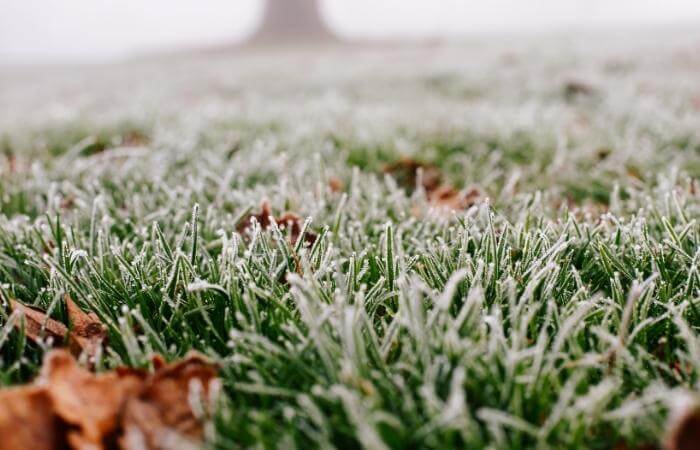
Read along to learn the pros and cons of winter fertilization and the best products, times, and methods to do it successfully!
When To Apply Winter Fertilizer
You need to apply winter fertilizer around six weeks before the first frost for the best results.
There’s no exact date to perform this yard-improvement task as every region of the country has different winter freeze expectations. Use historical first-frost data to determine the best time to fertilize in your location, and make a note on your calendar to remind you.

When you apply the fertilizer too late in the fall season, the grass shoots will grow fast and thick, but the root systems lag behind, which leaves them vulnerable to stress.
When the roots of your lawn are under duress, they are more susceptible to die off during winter or have snow mold issues once spring hits.
Applying fertilizer six to eight weeks before you expect the first frost will enable the entire plant to utilize the nutrients before beginning the natural process of hardening off in preparation for winter.
What Temperature Is Too Cold To Fertilize A Lawn?
For any form of fertilizer to work, the nutrients must break down, absorb into the soil, and be taken up by the plant’s root system.
A plant must be actively growing to uptake the fertilizer ingredients, which means the temperature and growth cycle of the grass must both be correct for it to do any good.
So what temperature is too cold for lawn fertilization?
For warm-season grasses, any temperature below 65-75°F, depending on grass variety, is too cold to apply fertilizer and give it a chance to fortify your lawn before it goes dormant.
For cool-season grasses, you’ll want to apply winter fertilizer a couple of weeks before temperatures consistently fall below 60°F.
It’s important to remember that the fertilizer will take 2-3 weeks to work its way down to the roots and into the plant.
If you wait until temperatures fall to 60°F to apply the fertilizer, the grass will go dormant before it can access any nutrients, which is a waste of your time and money.
Should I Fertilize My Lawn In The Winter?
A lush green lawn doesn’t happen overnight. It takes work and planning, and fertilizer plays a significant role. Should you fertilize your lawn in the winter?
Yes, you should, but what type you use depends on the variety of your lawn’s grass and soil conditions. Also, when you apply winter fertilizer will depend on the weather where you live.
Many homeowners are unaware that putting down lawn fertilizer in the winter will boost and strengthen fresh spring growth.
Many types of grass grow actively in the fall, such as:
- Rye grass
- Bluegrass
- Fescue
- Bentgrass
Cool-weather fertilization gives these varieties the energy they need for robust growth to sustain the root system through winter.
Warm-season grass will uptake the nutrients from fertilizer in the springtime, such as:
- St. Augustine
- Zoysia
- Bermudagrass
You need to be aware that “winter” fertilizer is not for use during winter when the grass is in a dormant stage. Instead, the fertilizer is applied during the fall months to prepare your lawn to survive through harsh winter temperatures.
Often lawns have grass that is a mix of varieties for consistent growth and color during the growing seasons.
It’s difficult to determine what grass variety is on your lawn without professional analysis, so giving winter fertilization a shot is worth the effort if you’re unsure about your lawn’s genetic makeup.
Many lawn care experts think applying a winter-blend grass fertilizer is the most important one of the year.
The reason behind such claims is that cold or freezing winter temperatures put the most stress on your lawn’s root system, causing damage that will make your yard look dull and patchy come spring if weak portions die off.
For warmer regions where grass may remain green all year, a winter fertilizer will keep the color vibrant, even if the blades aren’t actively growing.
Applying a good winter fertilizer at the right time will give all lawns the nutrient boost they need when active growth returns in the spring, so your yard revives faster.
As these nutrients kick in when warmer weather spurs new lawn growth, it gives you a time buffer before you need to start applying your standard spring and fall lawn fertilizer.
Pros And Cons Of Applying Winter Lawn Fertilizer
Advantages of Winter Lawn Fertilization
- Promotes healthy root development so the grass can regrow vigorously after the dormant stage
- A deeper and more expansive root system increases the drought and disease resistance of the grass during the summer months
- Fall fertilization gives the grass a nutritional boost so it can repair any damage from summer wear and tear
- Helps thicken the lawn and fill in bare patches
Disadvantages of Winter Lawn Fertilization
- It is a waste of money and product as the grass cannot use the fertilizer if it’s not actively growing
- Heavy winter rains or snowfall may wash away fertilizer before the grass can use it
- May increase growth too much, causing strain on the plant before going dormant
Winter Fertilizer Numbers
Selecting the best blend of winter fertilizer is crucial. The mix needs both fast-release nitrogen to thicken the lawn and slow-release nitrogen to feed the roots as long as possible before they go dormant.
This winter fertilizer blend will heal lawn damage from the summer heat or foot traffic and have the roots ready to support healthy new growth in the spring.
Lawn fertilizer features nitrogen (N), phosphorus (P), and potassium (K). What makes fertilizer for winter different is the potassium content, which is higher than spring or summer fertilizer blends by a large number.
The higher potassium level supports:
- Plant hardiness that reduces stress
- Root tolerance against cold
- Assists in root absorption of other trace nutrients
For example, Scott’s Turf Builder NPK ratio for their northern blend spring fertilizer is 32-0-4, with all the nitrogen slow-release. Scott’s winter blend fertilizer has an NPK of 32-0-10.
Depending on your home’s location and the type of grass on your lawn, you may want to tailor your winter fertilizer to provide more benefits, such as more potassium and organic material.
Espoma Organic Fall Winterizer is one such option that has an NPK of 8-0-6, or Johnathan Green & Sons Winter Survival with an NPK of 10-0-20.
Many states do not allow phosphorus in lawn fertilizers due to environmental damage from runoff.
If your state does allow it, the chemical does a great job increasing the grass’s ability to absorb water and nutrients.
Look for The Andersons PGF Complete 16-4-8 Fertilizer that delivers a balanced blend of NPK along with humic and fulvic acid to increase nutrient uptake.
How To Apply Winter Fertilizer
Applying your winter fertilizer isn’t tricky, but you must take care not to over or underfeed your lawn and that you put it down at the correct date.
Ensure you are applying the fertilizer at the right time for your location. Do not apply the product if you expect the first frost to occur within four weeks.
Using a handheld or walk-behind broadcast spreader makes for quicker and more even results.
Read the label on your fertilizer bag for optimal coverage for your lawn size.
TIP: Divide the fertilizer into two parts before application and take one half to spread over your lawn in a horizontal pattern. Take the other half and go over the yard perpendicular to the first pass for extremely even coverage.
After applying the winter fertilizer, water the lawn well for the next three days if rain is not forecasted. Water will activate the fertilizer and bring immediate nutrients to hungry roots, while the slower-release granules will keep feeding till the first frost.
In Summary
Smart gardeners know the importance of winter fertilization if they want their lawn to look lush and green every spring, summer, and fall.
Remember to keep the N-P-K ratios in your grass fertilizer for winter ideal for your soil needs so you can provide the right balance of nutrients to support strong root development that will survive through even the harshest winter weather.
When you use the best winter lawn fertilizer, you’ll see a difference in the appearance of your yard and enjoy the envious looks from all of your neighbors!
